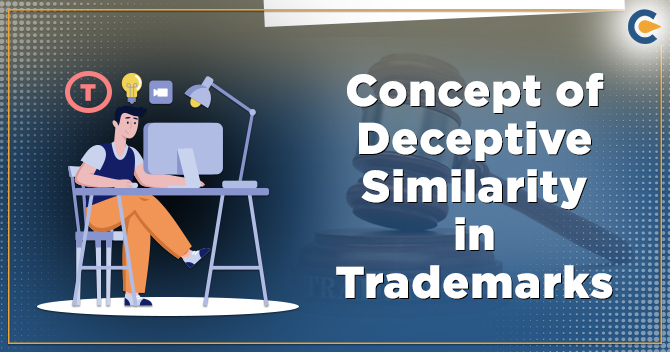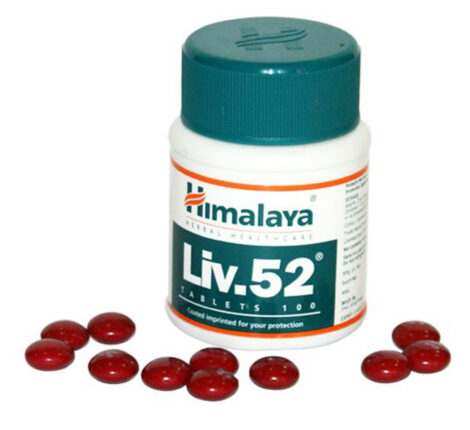Concept of Deceptively Similar under Trademark Law
Author – Bharat Sharma , Pallavi Paul
INTRODUCTION
Trademarks are used as an identification mark for representing and differentiating the goods and services of one business from another.
Trademark has been defined in Section 2(zb) of the Trade Marks Act, 1999 as:
“A mark capable of being represented graphically and which is capable of distinguishing the goods/services of one person from those of others and may include shape of goods, their packaging and combination of colors”
Mark has been defined in the Trademark Act in Section 2(m) as :
“A mark incudes a device, brand, heading, label, ticket, name, signature, word, letter, numeral, shape of goods, packaging or combination of colors or any combination thereof”
Meaning and Scope of Deceptive Similarity of Marks:
This concept of deceptive similarity has been discussed in The Trade Marks Act, 1999 under Section 2(h) as:
“A mark shall be deemed to be deceptively similar to another mark if it so nearly resembles that other mark as to be likely to deceive or cause confusion.“
In simple words, deceptively similarity of marks can also be defined as similarity between the trademarks which can likely deceive the general public of average intellect to believe that the mark in question is in some way or the other linked to the registered or a well-known trademark.
There is a thin line of difference between identical marks and deceptive similar marks. Identical marks are ‘completely same/similar’ marks whereas deceptive similar marks are not completely similar marks but a portion of the mark might be similar, like the logo/word/letter of the mark which might deceive consumers into thinking that the second product is the original product.
The idea of deceptive similarity, has been generally perceived as a ground for trademark infringement or passing-off action. Under the Indian Trademark laws, deceptive similar marks are considered as a ground for objection in the course of registration of the mark by the Trademark Registry.
Criteria(s) for determination of deceptively similarity of marks:
The criteria for determination of deceptive similarity of marks had been decided in the case of Cadilia Healthcare Limited v. Cadilia Pharmaceutical Limited, where the Hon’ble Supreme Court set out specific rules for deciding the nature of similar or misleading marks:
• The nature of the concerned marks i.e., whether the mark is a word mark, label mark, or composite mark.
• The nature of goods/services of the concerned marks.
• The degree of similarity between the concerned marks.
• The similarity of the traders of the concerned marks.
• The mode of purchase and class of purchasers for the goods and services of the marks in question.
Test of Deceptive Similarity of marks:
The test of deceptive similarity was decided by the Hon’ble Supreme Court in the case of Parle P Products v. JP Co. Mysore. This case which was brought up before the Trial Court by Parle has gone through a series of judgements. The Supreme Court ruled out in favor of plaintiff and decided the tests which needs to be considered for deciding the deceptive similarity of marks. The tests are:
• In order to come to the conclusion whether one mark is deceptively similar to another, the broad and essential features of the two marks are considered. They should not be placed side by side to find out if there are any differences in the design and if so whether they are of such character as to prevent one design from being mistaken for the other.
It would be enough if the impugned mark bears such an overall similarity to the registered mark as would likely to mislead a person usually dealing with one to accept the other if offered to him.
• Apart from the structural, visual and phonetic similarity or dissimilarity, the question has to be considered from the point of view of man of average intelligence and imperfect collection.
• Both the marks in question, should be considered as a whole.
Some landmark cases in relation to deceptive similarity:
It is important to take note of the ratio decidendi of different cases with respect to the concept of “deceptively similar” to understand the ambit and extent of the expression. Indian Courts have even managed to furnish few cases with milestone standards and rules with respect to deceptive similarity of marks.
– S.M Dyechem Ltd v. Cadhbury India Ltd– The dispute was regarding the mark ‘PIKNIK’ and ‘PICNIC’ where the Supreme Court supported the High Courts decision and stated both the marks were different in their word composition and appearance so there is no scope of deceptively similarity.
– Corn Products v. Shangrila Food Products Ltd. – The Apex court held that it is a well-recognized that in deciding a question of similarity between two marks, the marks have to be considered as a whole. The comparison between the two marks has to be made from the point of view of a man of average intelligence and of imperfect recollection. The marks are similar only in the event the overall structural and phonetic similarity and the similarity of the idea in two marks are likely to cause confusion between them to such an individual.
– M/S Mahasian Di Hatti Ltd v. MR Raj Niwas – The dispute was regarding the device mark of ‘MDH’ used by the plaintiff and ‘MHS’ used by the defendant. The Court held that there was striking similarity between the logos and every possibility of causing consumer confusion.
– Amritadhara Pharmacy v. Satyadeo Gupta – The Hon’ble Supreme Court in this case held that a reasonable man’s test and the overall impression test needs to be conducted to decide the similarity of the marks. The two marks has to be viewed from the perspective of a man with average intelligence and uto industries Ltd. overall impression of the mark needs to be considered.
– Schering Corporation and Ors v Getwell Life Sciences Pvt Ltd – Plaintiff filed application for restraining usage of defendants marks ‘Temoget’ which was similar to their registered marks ‘Temodal’ which was used to cure cancer. The Supreme Court held that the marks are not phonetically similar and the price range for both the marks were also different so there is no chance of consumer confusion.
– F.Hoffmann- La Roche & Co. Ltd v. Geoffrey Manner & Co. Pvt. Ltd– The Supreme Court held that marks must be compared as a whole, the true test being the totality of the proposed mark is such that it is likely to cause deception/confusion or mistake in the minds of person accustomed to the existing trademark.
Conclusion
It is evident from the cases mentioned that the Courts have tried to go beyond the literal meanings of the legislations to provide justice and safeguard the rights of the proprietors and protect the interests of the consumers. Courts have decided that there cannot be a practical restraint that can be applied to all cases uniformly for understanding the concept of deceptively similar trademarks. Each case has to be judged on the basis of merits and factual circumstances.




